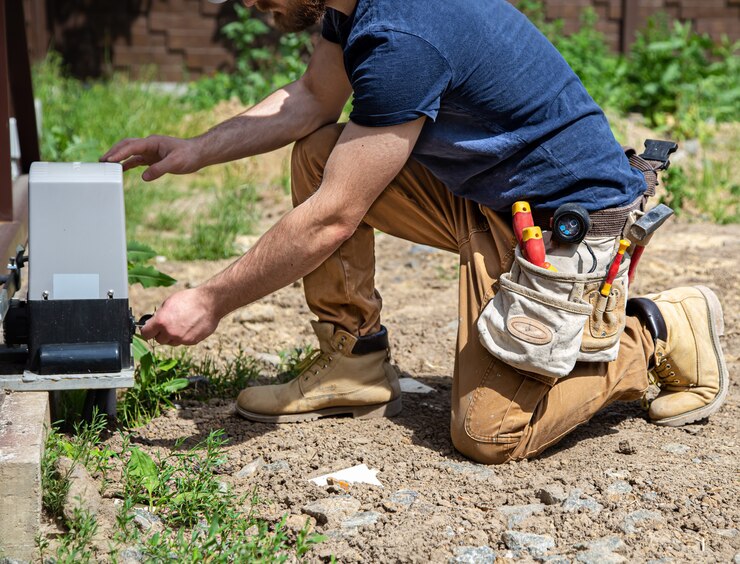Summer storms can be intense, often bringing heavy rainfall that tests the limits of home drainage systems. One critical component in managing this excess water is the sump pump. But is your sump pump ready to handle the summer storms ahead? In this blog post, we’ll explore everything homeowners need to know about sump pumps, from understanding their function to maintaining them for optimal performance.
Summer storms can wreak havoc on homes unprepared for the sudden influx of water. For many homeowners, the first line of defense against basement flooding is the trusty sump pump. Ensuring that your sump pump is in top working condition is not just a good practice—it’s essential for protecting your home. This guide will walk you through the fundamentals of sump pumps, maintenance tips, and signs that it might be time for an upgrade.
Understanding Your Sump PumpWhat is a Sump Pump?
A sump pump is a device installed in the lowest part of a basement or crawlspace. Its primary function is to prevent flooding by removing accumulated water. The pump is usually placed in a specially constructed sump pit. When water enters the pit, the sump pump activates to pump the water out and away from the home, typically to a municipal storm drain or dry well.
How Does a Sump Pump Work?
Sump pumps operate using a float switch, which detects water levels in the sump pit. When the water reaches a certain level, the float switch triggers the pump. The motor then activates, and the impeller forces water through a discharge pipe and out of your home. There are two main types of sump pumps—submersible and pedestal. Submersible pumps are installed inside the sump pit and are designed to function underwater, while pedestal pumps have the motor mounted above the pit.
Why Are Sump Pumps Essential?
For homeowners, especially those in areas prone to heavy rainfall and flooding, a sump pump is crucial. It helps prevent water damage, mold growth, and structural issues resulting from excess moisture. A well-functioning sump pump provides peace of mind, knowing that even during the heaviest summer storms, your home is protected.
Signs Your Sump Pump Needs AttentionFrequent Cycling
One common sign that your sump pump might need attention is frequent cycling. If your pump turns on and off more often than usual, it could indicate a problem with the float switch or an issue with the pump’s power source. Constant cycling can wear out the pump prematurely, so it’s essential to address this issue promptly.
Strange Noises
Unusual noises coming from your sump pump are another red flag. Grinding, rattling, or excessive vibrations could signal mechanical issues or debris clogging the pump. If you notice any strange sounds, inspect the pump immediately and consider consulting a professional.
Continuous Running
If your sump pump seems to run continuously, it might not be sized correctly for your home’s needs or there could be a problem with the float switch. Continuous running can lead to overheating and eventual pump failure. Addressing this issue quickly can prevent costly repairs down the line.
Summer Sump Pump Maintenance Inspect the Power Source
Before the summer storm season begins, inspect your sump pump’s power source. Ensure that it is plugged into a functioning ground fault circuit interrupter (GFCI) outlet. A GFCI outlet helps prevent electrical shock and should be tested periodically to ensure it’s working correctly.
Clean the Sump Pit
Keeping the sump pit clean is crucial for the pump’s efficiency. Remove any debris, dirt, or gravel that may have accumulated over time. A clean sump pit allows the pump to operate without obstruction, reducing the risk of clogs and mechanical issues.
Test the Float Switch
Testing the float switch is an essential step in sump pump maintenance. Pour a bucket of water into the sump pit and observe the pump’s activation. If the pump doesn’t turn on or struggles to remove the water, there may be an issue with the float switch or the pump itself. Regular testing ensures that the pump is ready to perform when needed.
Upgrading Your Sump PumpWhen to Upgrade
Knowing when to upgrade your sump pump can save you from potential disasters. If your current pump is over ten years old, has frequent issues, or can’t keep up with heavy rainfall, it might be time for an upgrade. Modern sump pumps offer enhanced features and improved efficiency.
Benefits of Upgrading
Upgrading your sump pump comes with several benefits. Newer models are more energy-efficient, providing better performance while consuming less power. Advanced features such as battery backups ensure that your pump continues to operate during power outages, which are common during severe storms. Upgraded pumps also tend to be quieter and more reliable.
Choosing the Right Pump
When selecting a new sump pump, consider factors such as the pump’s horsepower, type (submersible or pedestal), and additional features like alarms or battery backups. Consulting with a professional can help ensure that you choose the right pump for your home’s specific needs.
Preparing your sump pump for summer storms is vital for protecting your home from water damage. Regular maintenance, timely upgrades, and understanding the signs of a failing pump can save you from costly repairs and provide peace of mind. Don’t wait until the next storm hits—take action now to ensure your sump pump is ready to handle whatever Mother Nature throws your way.
For homeowners in need of expert advice or assistance with sump pump maintenance, consider reaching out to a Hamilton Plumber. Their professional services can help you keep your sump pump in peak condition, ensuring your home stays dry and safe all year round.







